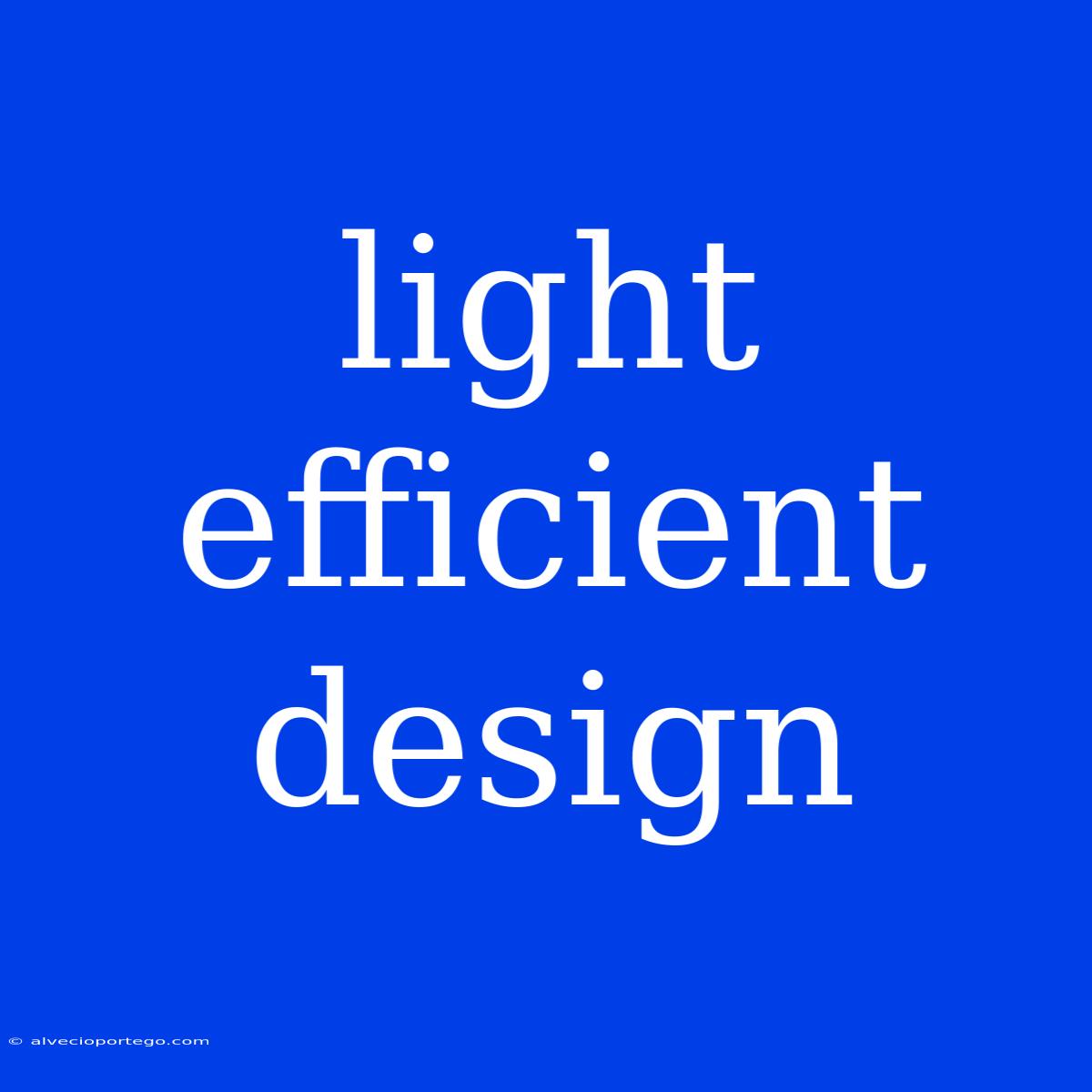Light Efficient Design: Creating Sustainable and Stunning Spaces
Light is a fundamental element in any design, shaping the mood, atmosphere, and functionality of a space. But, beyond its aesthetic appeal, light plays a crucial role in sustainability. Integrating light efficient design into your projects can significantly reduce energy consumption, minimize environmental impact, and create spaces that are both beautiful and responsible.
The Importance of Light Efficiency
Light efficiency refers to the ability to achieve optimal illumination while minimizing energy usage. It encompasses various aspects, including:
- Choosing the Right Light Sources: Selecting energy-efficient bulbs like LEDs and CFLs over traditional incandescent bulbs can drastically reduce energy consumption.
- Optimizing Lighting Systems: Utilizing smart lighting controls, dimming capabilities, and motion sensors allows for dynamic adjustments to light levels based on occupancy and daylight availability.
- Harnessing Natural Light: Incorporating windows, skylights, and lightwells to maximize natural daylight penetration during the day minimizes reliance on artificial light.
- Reflective Surfaces: Utilizing light-colored surfaces and materials to reflect natural and artificial light effectively, maximizing brightness and reducing the need for additional fixtures.
Benefits of Light Efficient Design
Implementing light efficient design brings a multitude of benefits:
1. Reduced Energy Consumption: This translates to significant cost savings on electricity bills, particularly in the long run.
2. Minimized Environmental Impact: By reducing energy consumption, light efficient design contributes to a smaller carbon footprint and a greener future.
3. Enhanced Indoor Comfort: By optimizing lighting levels and minimizing glare, light efficient design creates a more comfortable and enjoyable environment for occupants.
4. Improved Productivity: Proper lighting can increase focus, concentration, and overall productivity within workspaces.
5. Increased Property Value: Buildings with energy-efficient features, including light efficient design, are often more desirable and fetch higher prices in the real estate market.
Implementing Light Efficient Design
Here are some practical tips for integrating light efficient design into your projects:
- Conduct a Lighting Audit: Analyze your existing lighting system to identify areas for improvement and potential savings.
- Utilize Daylight Modeling: Use software simulations to optimize daylight penetration and minimize reliance on artificial light.
- Incorporate Smart Lighting Controls: Implement programmable and responsive lighting systems that adjust based on occupancy and daylight levels.
- Choose High-Efficiency Fixtures: Opt for fixtures with high lumen output and energy-efficient bulbs.
- Design for Flexibility: Incorporate features like dimmers and adjustable fixtures to ensure adaptability to different needs and situations.
- Consider the Human Factor: Prioritize lighting that supports different tasks and promotes well-being.
Conclusion
Light efficient design is not just about reducing energy consumption; it's about creating spaces that are more comfortable, productive, and sustainable. By embracing responsible lighting solutions, we can create a brighter future for ourselves and the planet.

